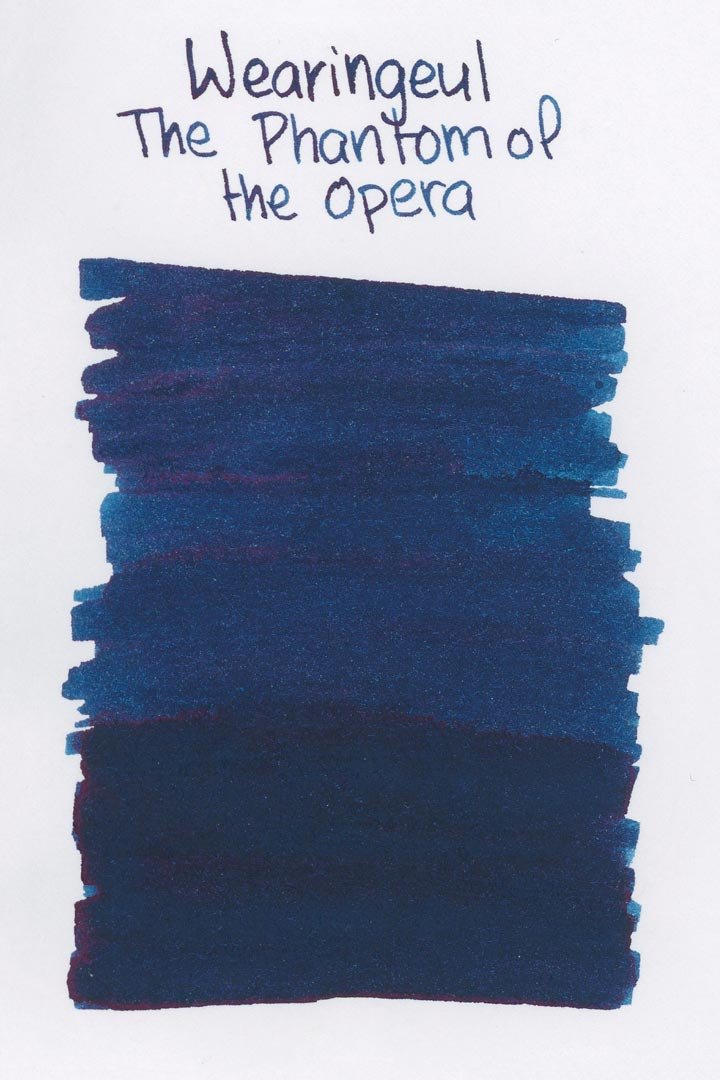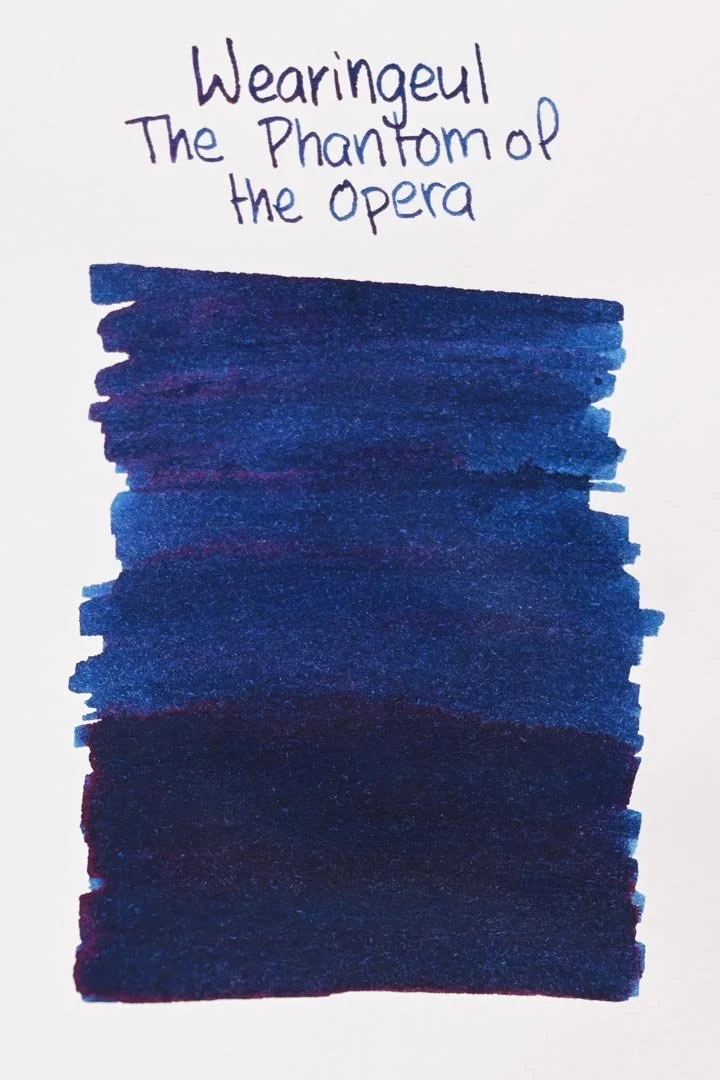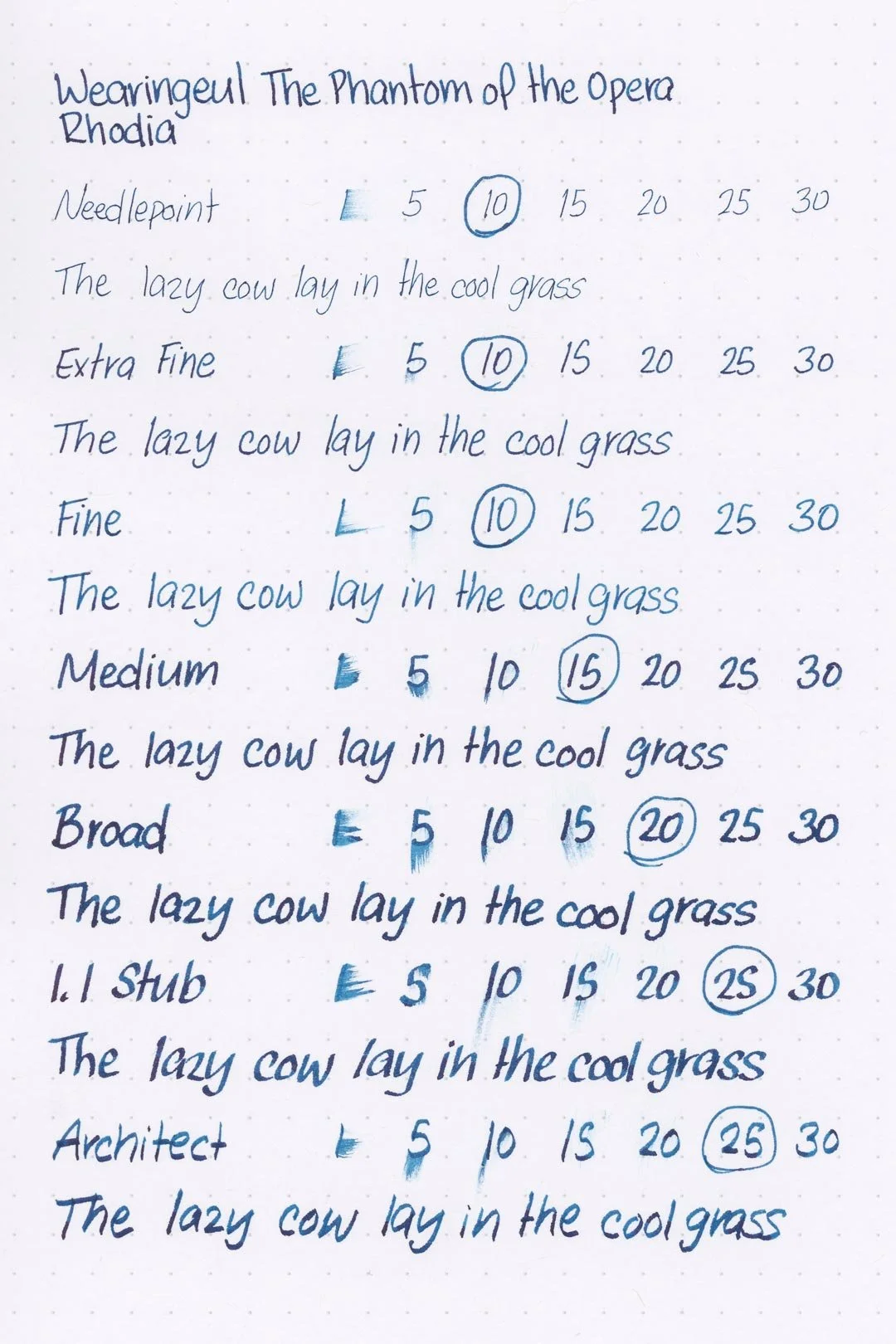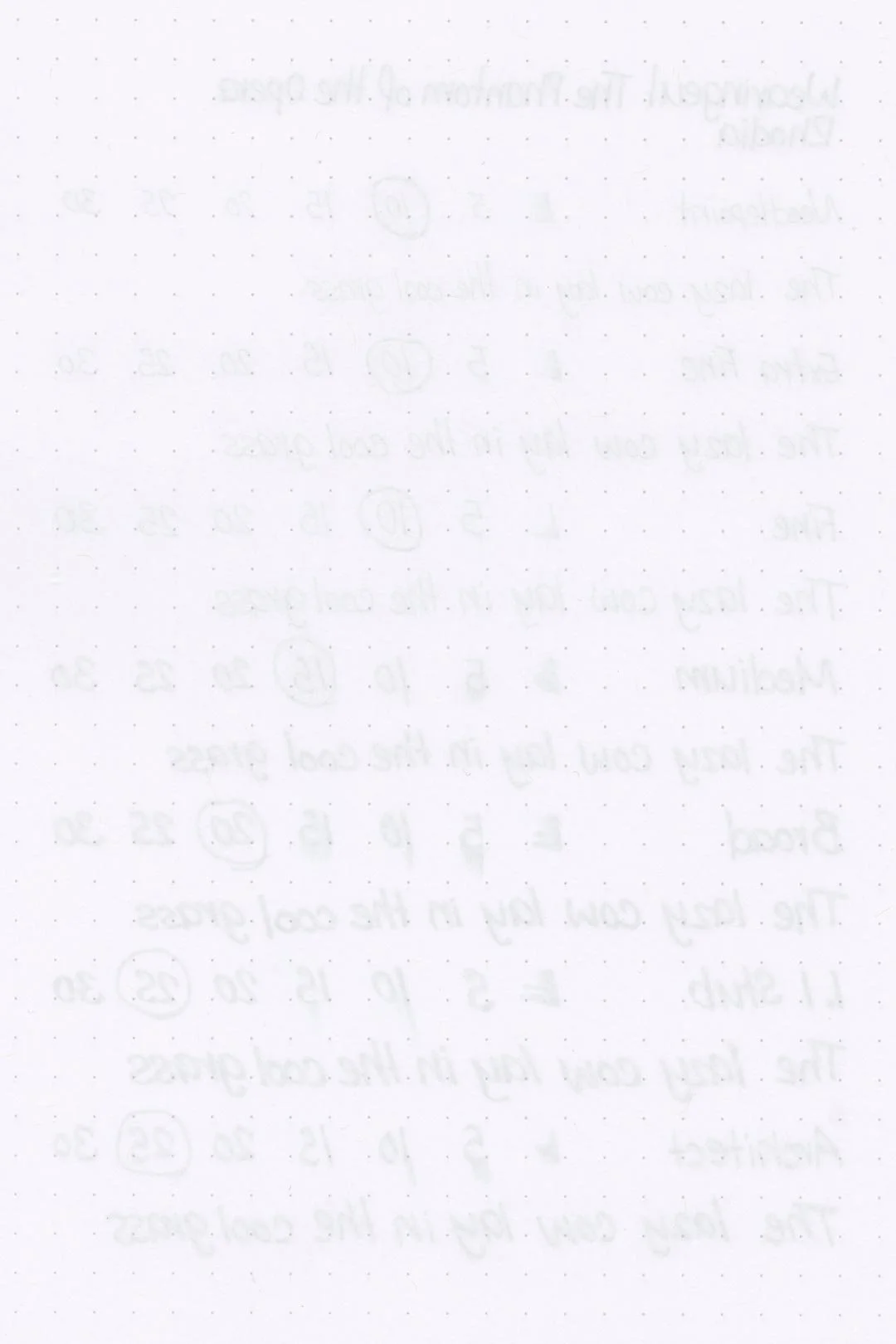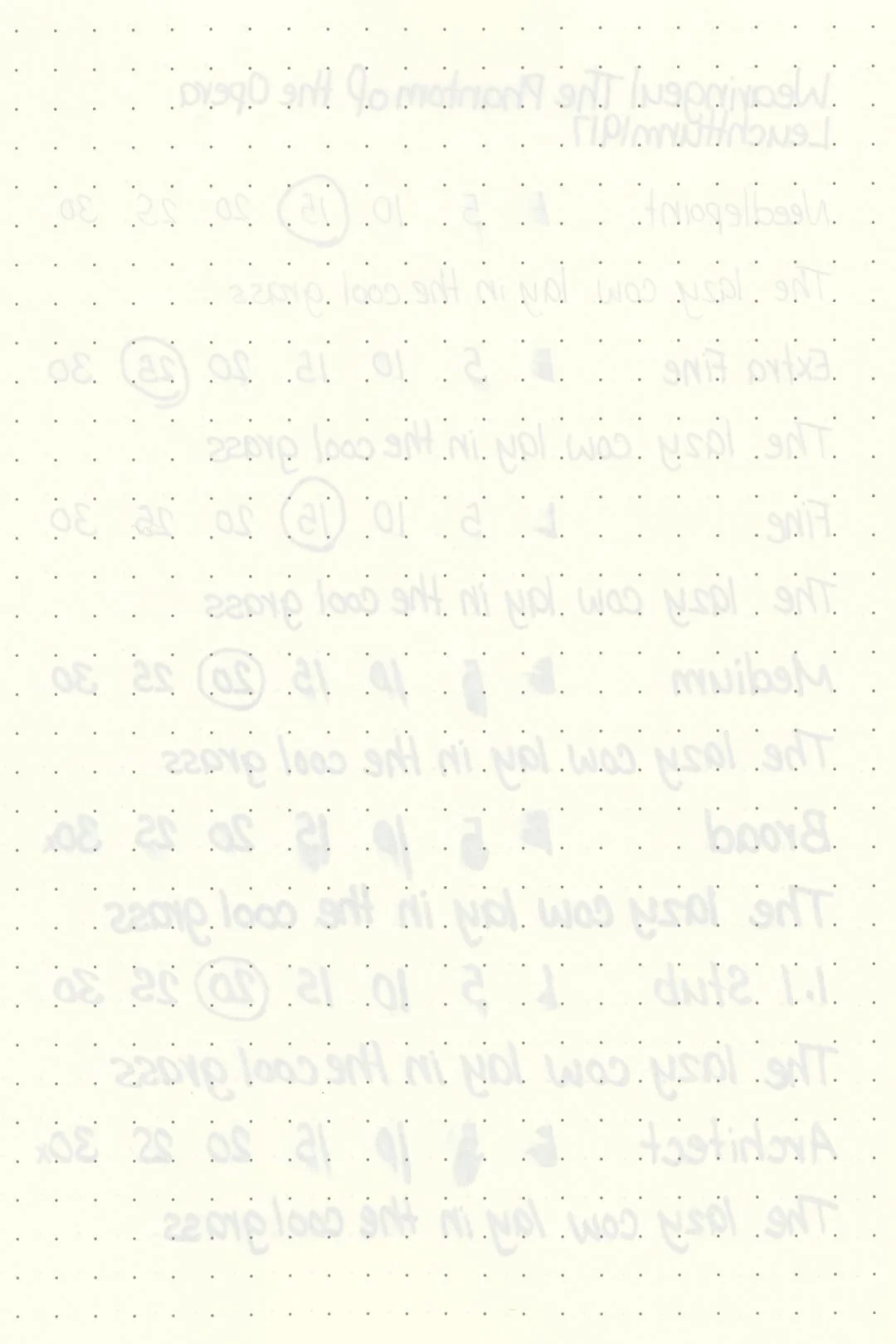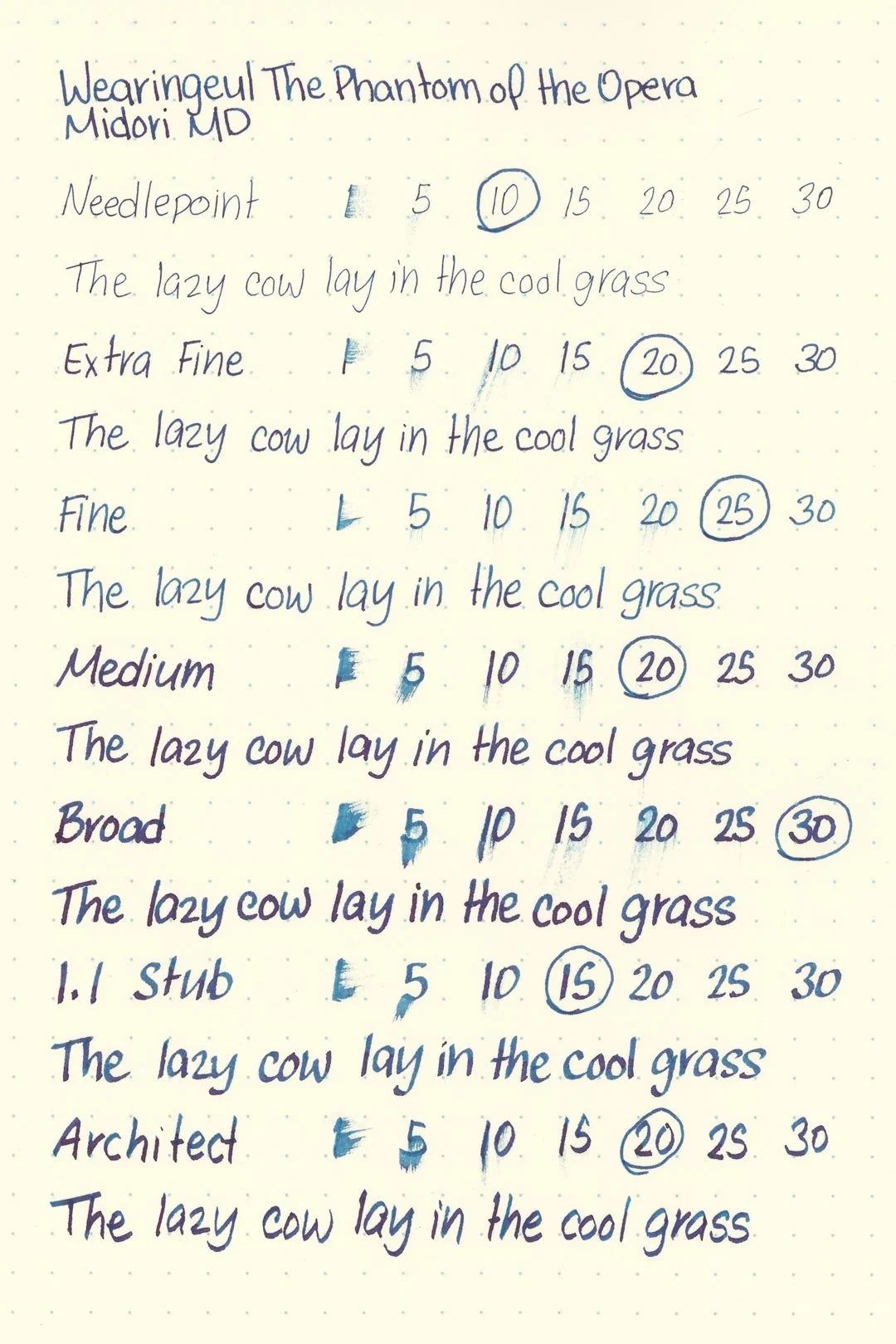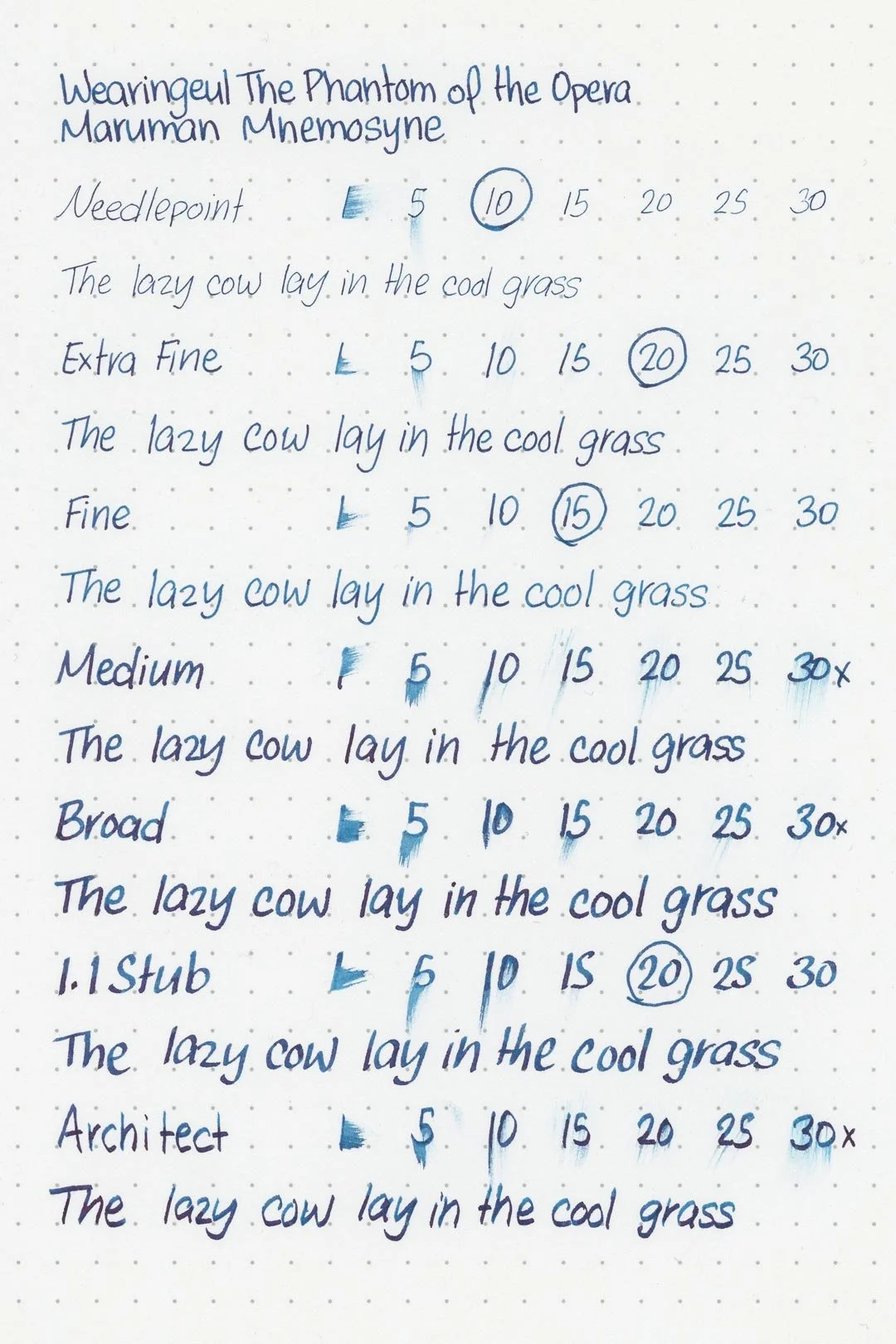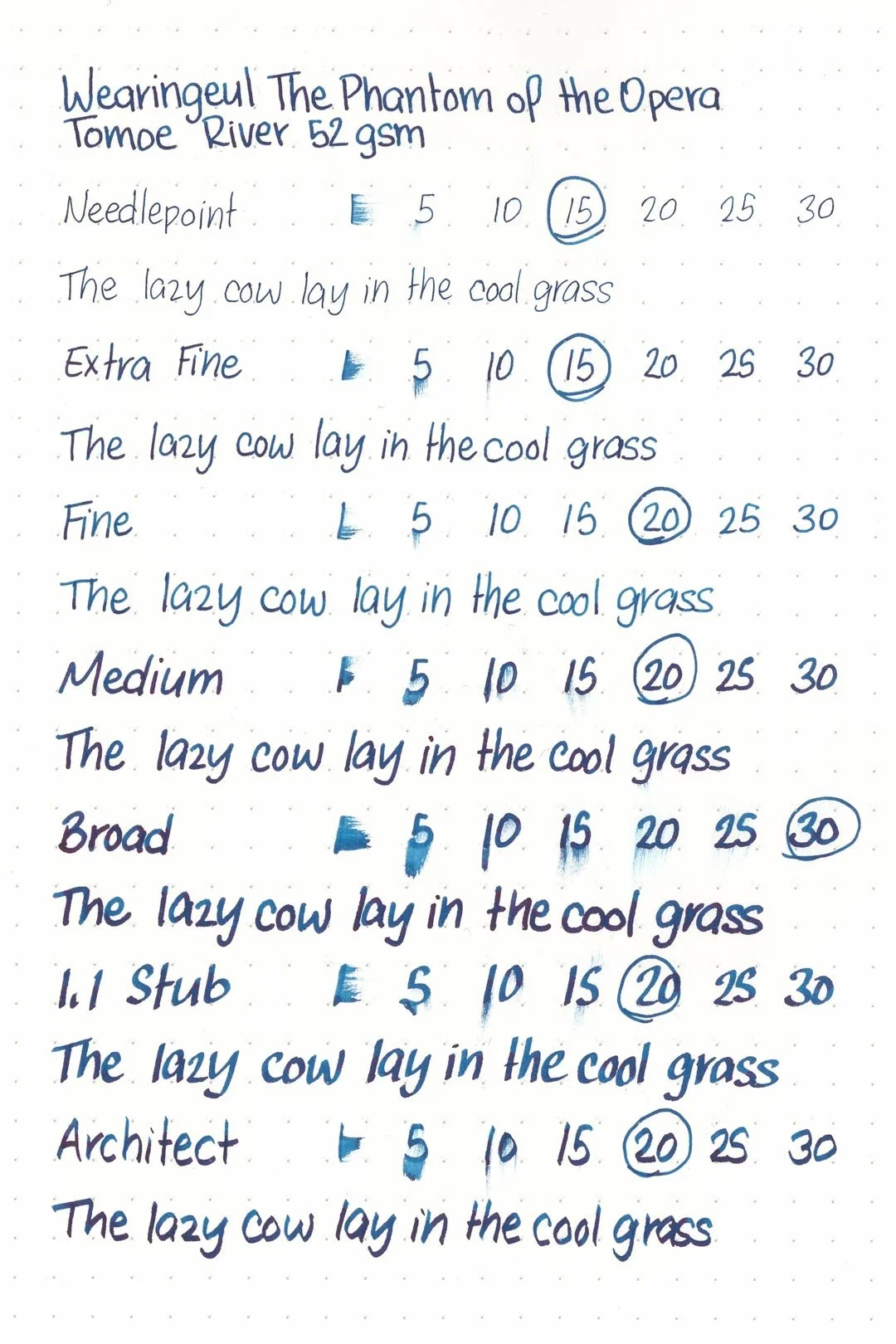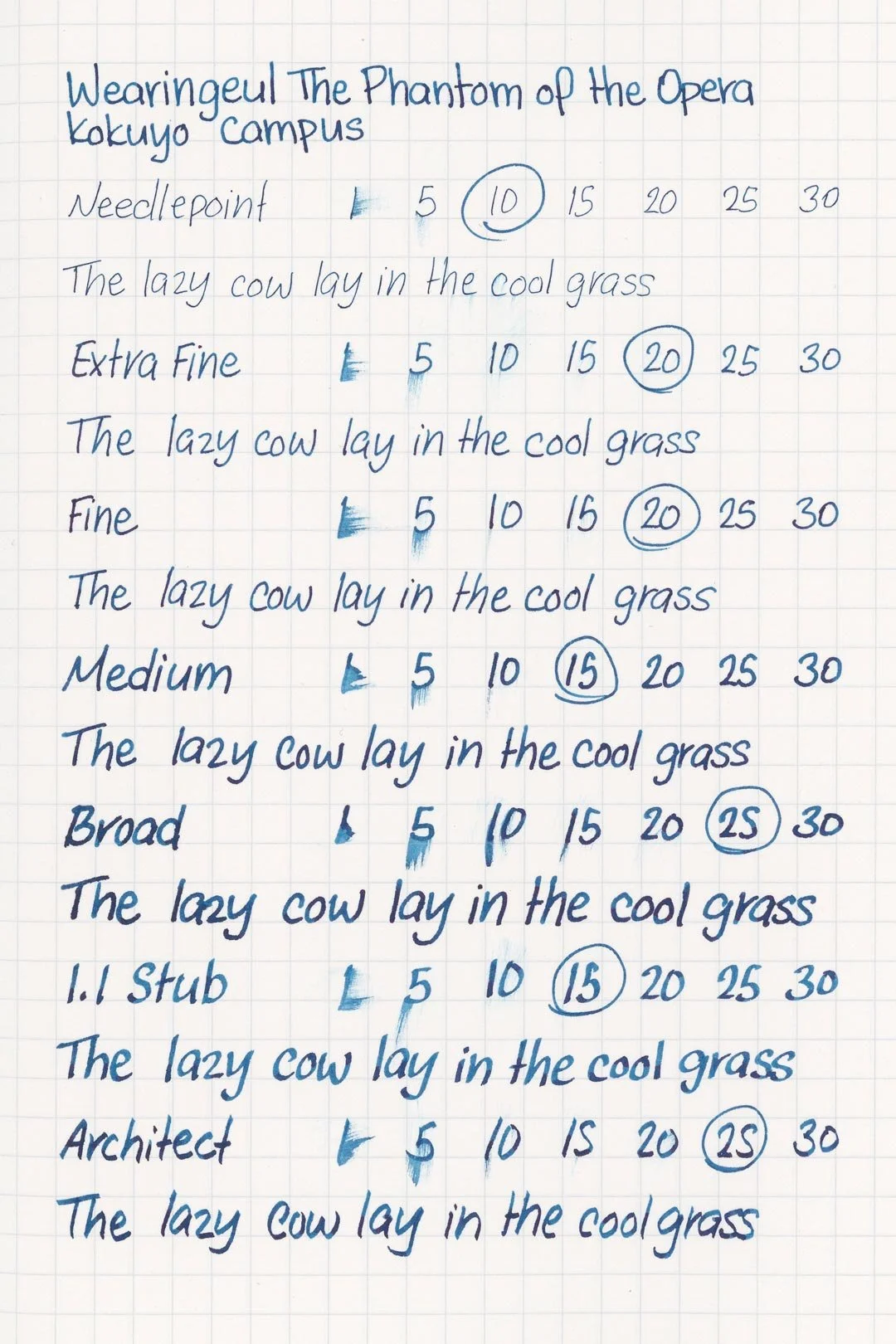Wearingeul The Phantom of the Opera
Ink Review #140
*Please note that the scan is the accurate representation of this color.
Disclosure: This ink was sent to me by Wearingeul for the purpose of review. This in no way impacts my review, and as always, all of my thoughts and opinions are my own. This post also contains affiliate links. If you click and make a purchase, I may earn a small commission.
Overview
The color/properties:
Wearingeul The Phantom of the Opera is a sheening ink. The base color is a muted, almost foggy, dark blue. The ink has a red sheen that can be very strong in some conditions (it often starts out very sheeny before it levels out after a few lines of writing), but I find that in general writing, it’s mostly visible at the bottom of letters where the ink pools the most, giving it a nice two-tone effect.
White paper emphasizes the two-tone look of the ink, but I have to admit, I really like how the cream paper brings out more of the fogginess, especially in regard to the ink’s theme.
Ink Splat
Ink Droplets
Rhodia
Leuchtturm1917
Performance on paper:
The Phantom of the Opera is well-behaved, and outside of a single spot in the Kokuyo Campus notebook, I didn’t find any visible bleeding or feathering during my tests. The ink should be fine on most fountain pen-friendly papers.
The dry times, on the other hand, weren’t the best (although they were noticeably better on Rhodia paper). The large nib sizes dried anywhere between 20-30 seconds (or more), and the finer nib sizes took anywhere between 10 to even 15 seconds to dry with the finest needlepoint. Of course, dry times like these are typical with sheening inks, and it should be noted that even after dry, the ink can be easily smudged, especially with residual moisture on the hand.
There is some water resistance; however, water exposure quickly causes the color to cloud (also within expectation for such a saturated ink). It’s surprisingly readable despite that, but I think your results will vary a lot in this case, and it will inevitably be messy. I wouldn’t want to get this ink wet.
Midori MD
Maruman
Tomoe River
Kokuyo
Water resistance
Chromatography
Performance in the pen:
The performance here is mixed. During my tests, the ink often started out with a smooth, wet flow; however, after only a few lines, the flow quickly drops off and then levels out at a much drier flow. During my long writing sessions, it never seemed to stop outright, but there was a lot to be desired in terms of lubrication, and overall, I found the writing experience to be unpleasant. The ink also tends to dry quickly in the nib, causing hard starts if you lift off for too long. Of course, these issues aren’t abnormal for a sheening ink, where there’s often a large sacrifice in performance for the cool effect. Aside from the lubrication, the ink seems to work well enough.
Cleaning the ink out of the pen was also surprisingly easy for such a sheeny ink, but it wasn’t quick either. It took 2 sets of soaking and flushing to get the nibs clean (which, to be fair, still isn’t bad all things considered), and an overnight soak for all the color/residue to dissolve from the barrel of the pen. Thankfully, that’s all it needed! There weren’t any stains, color, or remaining residue afterwards (though I still advise high caution when using inks like these if staining is a concern).
Written on 52 gsm Tomoe River paper (white) with a medium nib.
Written on Midori MD paper (cream) with a medium nib.
The Phantom of the Opera comes with a removable mask sticker over the standard label on the bottle. I won’t be removing mine because it’s way too cool for that.
Performance in a pen: 6/10
Performance on paper: 10/10
Color saturation: 7/10
Sheening: 7.5/10
Shading: 0/10
Dry time: 6/10
Water resistance: 1/10
Ease of cleaning: 6.5/10
Shimmer: None
My personal thoughts (and spoilers, probably)...
I’m afraid I have to admit that I’ve never read Gaston Leroux’s The Phantom of the Opera. I have, however, seen the musical numerous times, so my opinions will reflect that. With all that said, Wearingeul themselves state that the color is supposed to resemble “a single rose blooming in the cold, dim underground of an opera house.” From my understanding, this is something that only appears in the musical. So, with the musical in mind and not the not book (but maybe also the book), I think the ink comes together beautifully! Although my first thoughts when looking at it weren’t so much about the Phantom’s roses, but the scene in which the Phantom ferries Christine through the lake underneath the Opera House — I’m sure many will interpret it differently as well.
Now, a red-sheening blue ink is nothing new, but I’m glad that Wearingeul didn’t overdo it here. It allows that shadowy blue base color to speak for itself, which I think not only emphasizes the mysterious atmosphere that dominates the story, but also nods to the heavy use of shadow blues and greens used in the stage production. Unfortunately, there’s the matter of some less-than-ideal performance here, and I wish it were a little slicker, but then again, more flow might make the color too dark or too sheeny, and I quite like the way it looks as it is. This leaves me once again at the unfortunate crossroads that plagues sheening inks: do I want it to work flawlessly or do I want it to look awesome? In this case, I think we can all agree that we want it to look awesome, and it sure does.
Written on 52 gsm Tomoe River paper with an Asvinie P20 (medium nib).
Featured in the photography and writing samples:
Wearingeul The Phantom of the Opera
Asvine P20, medium nib (Amazon)
52 gsm A5 Tomoe River notebook by Galen Leather
Midori A6 lined notebook (Amazon)
Wearingeul The Phantom of the Opera binder clip
Wearingeul The Phantom of the Opera bookmark
Tim Holtz mini bulldog clips (Amazon)
Dominant Industry Ink Muddler
Roher & Klingner glass dip pen
More images/info:
Tools and materials used in the writing samples:
A TWSBI Diamond 580 AL with 7 nib units including a Needlepoint grind, EF, F, M, B, 1.1mm stub, and an Architect grind. All nibs are tuned to perform at the same medium wetness.
A Rhodia No16 A5 DotPad
A Leuchtturm1917 A5 Notebook
A Midori MD A5 Notebook
A 52gsm A5 Tomoe River Notebook
A Maruman Mnemosyne A5 Spiral Notebook
A Kokuyo Campus A5 Notebook
